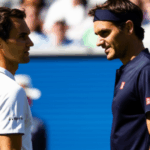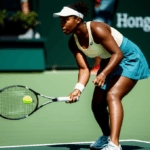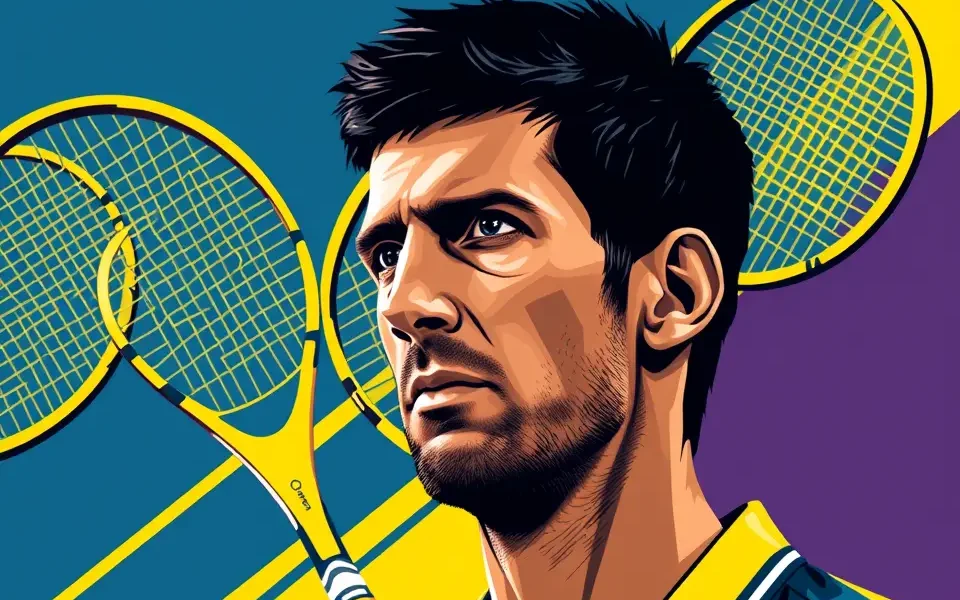Novak Djokovic, alongside other prominent figures in tennis like Jannik Sinner, Aryna Sabalenka, and Coco Gauff, is spearheading a movement advocating for a more equitable distribution of revenue between players and Grand Slam tournaments. This push comes as a unified front, with top players seeking increased prize money, greater financial support for player welfare programs, and a stronger voice in decisions impacting the sport.
The Players’ United Front: A Letter to the Grand Slams
The move towards seeking a greater share of revenue gained momentum with a letter addressed to the organizers of the four Grand Slam events: the Australian Open, the French Open, Wimbledon, and the US Open. This letter, signed by 20 of the top-ranked players in both the ATP and WTA, calls for a significant increase in revenue sharing to benefit the players, who they rightly assert are essential to the success of these prestigious tournaments.
Key Demands Outlined in the Letter
The letter highlights three key areas of concern and requests:
- Financial Contributions to Player Welfare: The players are asking that the Grand Slam tournaments contribute financially to player welfare programs funded by the ATP and WTA Tours.
- Increased Prize Money: A central demand is for prize money to increase to a more appropriate percentage of tournament revenues, which should reflect the players’ contribution to the overall value of the events.
- Greater Decision-Making Power: The players seek to have more say in decisions that directly impact competition, as well as their health and welfare.
Djokovic’s Stance: It’s Not Just About the Money
In a press conference held before the ATP Masters 1000 Monte Carlo 2025, Novak Djokovic addressed the issue, clarifying that the players’ concerns extend beyond just revenue sharing. He emphasized the general sentiment among players that prize money should align more closely with that of ATP tournaments. While acknowledging that immediate changes are unlikely, Djokovic expressed hope that Grand Slam tournaments would be open to discussing these issues with the players.
Djokovic highlighted the importance of player involvement in decisions that affect them, stating, “It’s not just about revenue sharing; players also believe that the Grand Slams should discuss decisions that affect us. We should be part of the process.” He proposed utilizing virtual meeting platforms like Zoom to facilitate discussions, ensuring player representation even when physical presence is not feasible.
The Financial Reality of Grand Slams: A Disparity in Revenue Sharing
Casper Ruud, the former world number two, has publicly stated that tennis players do not receive a fair share of the revenue generated by the Grand Slams. According to Ruud’s estimates, player prize money represents on average 15 percent of the revenue made during the Australian Open, Roland Garros, Wimbledon, and the US Open.
Comparing this to other major sports leagues like the NFL, MLB, and NBA, where revenue sharing often approaches 50 percent, Ruud argues that tennis players are significantly undercompensated. He stated, “As a player, I don’t feel like it’s fair. If you compare with other major sports around the world, NFL, MLB, NBA, they are closer to 50 percent revenue sharing.”
Grand Slam Prize Money in 2025: Impressive Figures, but a Small Slice
While Grand Slam tournaments boast impressive prize pools, the percentage allocated to players remains relatively small compared to the overall revenue generated.
- Australian Open: In 2025, the Australian Open offered A$96.5 million (approximately $59 million USD), an 11.56% increase from 2024.
- French Open: The French Open’s prize fund is expected to surpass its 2024 figure of €49.6 million (approximately $52 million USD).
- Wimbledon: In 2024, Wimbledon offered £50 million (approximately $63.9 million USD), with a likely increase in 2025.
- US Open: The US Open held the largest purse in 2024, totaling $75 million.
However, these figures represent only a fraction of the total revenue generated by these events. For example, in 2023, the US Open’s $65 million prize pool was just 12% of its $514 million revenue. The Australian Open’s prize money accounts for approximately 15-20% of Tennis Australia’s event revenue.
Where Does the Money Go?
Grand Slam organizers argue that a significant portion of their revenue is reinvested back into the sport through junior development programs, regional tournaments, and facility upgrades. While these investments are undoubtedly important for the long-term health of tennis, players argue that they deserve a more equitable share of the revenue they help generate.
The PTPA Lawsuit: A Push for Systemic Change
The players’ push for increased revenue sharing is further supported by an antitrust lawsuit filed by the Professional Tennis Players Association (PTPA), co-founded by Novak Djokovic and Vasek Pospisil. The lawsuit targets the ATP, WTA, International Tennis Federation (ITF), and International Tennis Integrity Agency, accusing them of anti-competitive practices and a disregard for player welfare.
Key Allegations in the PTPA Lawsuit
- Capping Prize Money: The lawsuit alleges that the governing bodies cap the prize money tournaments award and limit players’ ability to earn money off the court.
- Controlling Player Pay and Working Conditions: The PTPA argues that the organizations in charge of tennis hold complete control over the players’ pay and working conditions.
- Unsustainable Schedules: The lawsuit calls the schedule unsustainable, noting that players are often made to compete in extreme heat and in the early hours of the morning.
- Abuse of Privacy Rights: The PTPA alleges that players’ privacy rights are being abused by random drug tests.
Comparisons to Other Sports: A Call for Fairer Distribution
Tennis players often draw comparisons to other major sports leagues like the NBA and NFL, where players receive a significantly larger share of the revenue. In these leagues, players typically receive around 50% of league revenues, a stark contrast to the 15-20% that Grand Slam players receive.
Casper Ruud emphasized this disparity, stating, “If you compare with other major sports around the world, NFL, MLB, NBA, they are closer to 50 percent revenue sharing.” Zheng Qinwen, another top player, echoed this sentiment, suggesting that tennis should follow the NBA model.
The Grand Slams’ Response: Open to Discussion
In response to the players’ demands, the U.S. Tennis Association (USTA) has stated that it is open to discussions and highlights its history of equal prize money and record-breaking payouts. Similarly, a source within the French Tennis Federation (FFT) confirmed that they had received the letter and proposed a direct, open, and constructive meeting with the players.
While the Grand Slam organizers have expressed a willingness to engage in dialogue, it remains to be seen whether they will be willing to make significant changes to the current revenue-sharing model.
Looking Ahead: A Potential Turning Point for Tennis
The collective action taken by Novak Djokovic and other top tennis players represents a significant moment in the sport’s history. By demanding a fairer share of revenue and greater involvement in decision-making processes, the players are challenging the existing power structures and advocating for a more equitable and sustainable future for professional tennis.
While the path forward may be challenging, the players’ unified front and willingness to take legal action suggest that they are determined to bring about meaningful change. The outcome of this dispute could have far-reaching implications for the financial landscape of professional tennis and the relationship between players and tournament organizers.








No Comment! Be the first one.